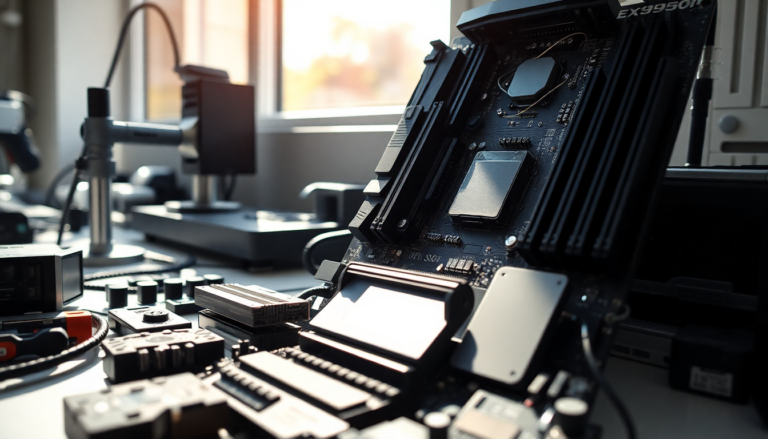Argomenti trattati
In a significant setback for Intel’s Arrow Lake platform, recent testing has unveiled that SSDs placed in the M.2 slots of the Intel X890 motherboard are not delivering their anticipated performance. The findings highlight a discrepancy that has tech enthusiasts buzzing, particularly those who have recently invested in cutting-edge hardware. As SSD technology continues to advance, the expectations for speed and efficiency are at an all-time high, making these revelations particularly impactful.
Understanding the SSD performance shortfall
According to the SSD Review, testing on the Intel X890 motherboard revealed that SSDs were achieving sequential read speeds of only 12GB/s. This falls short of the expected 14GB/s for PCIe Gen 5 SSDs. Intel confirmed the issue, attributing the performance dip to a longer die-to-die data path, which affects how data is transmitted between the SSD and the motherboard. This revelation is particularly concerning for those who have eagerly awaited the performance enhancements promised by the latest hardware.
This performance hiccup underlines the challenges faced by users who have upgraded to the latest technology, hoping to leverage the full capabilities of their new components. As it stands, PCIe Gen 4 SSDs, which are significantly cheaper, may provide better value for those looking to maximize their storage performance without breaking the bank. The gap in performance makes it clear that the latest generation of SSDs is not yet fully realized in the current Intel architecture.
The implications of the X890 chipset
The Intel X890 chipset is designed to support up to 24 PCIe 4 lanes, a considerable feature set that allows users to harness the power of the latest SSD technology. However, the inclusion of the Arrow Lake CPU, specifically the Core Ultra 9 285K, increases the lane count to 48 and introduces 20 PCIe 5.0 lanes. The expectation was to see substantial performance boosts, especially with the newest architecture. Yet, as Intel has pointed out, the increased latencies due to the longer data path have complicated this promise.
Testing on both the Intel Z890 and Z790 chipsets revealed stark differences in performance. While the Z790 managed to hit the target 14GB/s sequential reads, the X890 fell short by a notable 14 percent. This discrepancy raises questions about the overall efficiency of the Arrow Lake platform and whether users will need to wait for future updates to address these concerns.
Intel’s challenge to regain trust
Intel’s Arrow Lake chips aimed to match the performance of the previous Raptor Lake generation, all while offering a significant reduction in power consumption. However, reports indicate a 17 percent drop in power efficiency, combined with underwhelming performance metrics. As Intel prepares to address these issues throughout 2024, there is a growing concern about whether it can rectify the current shortcomings or simply learn from these missteps.
The tech community is keenly observing Intel’s next moves as it navigates these challenges. With a reputation to uphold, the company faces pressure to not only resolve the current issues but also to ensure that future products live up to the high expectations set by their marketing. Enthusiasts are left wondering if the promised upgrades will translate into real-world performance improvements or if they will be left grappling with the limitations of the current architecture.
A look at the future of SSD technology
As the landscape of SSD technology continues to evolve, the importance of compatibility and performance optimization will become increasingly critical for both consumers and manufacturers. The current situation with Intel’s Arrow Lake platform serves as a reminder of the complexities involved in integrating new technologies. It also highlights the necessity for thorough testing and validation before claiming compatibility or performance benchmarks.
For now, those considering upgrades should weigh their options carefully. With PCIe Gen 4 SSDs providing a more economical choice and delivering satisfactory performance, it might be prudent to hold off on investing in PCIe Gen 5 until Intel resolves these issues. The market is dynamic, and staying informed about the latest developments can help consumers make better decisions regarding their tech investments.

